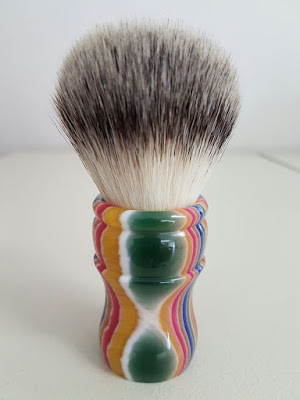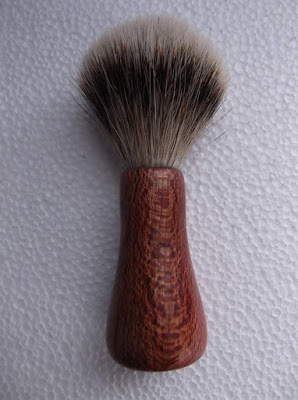In recent years, packed international and domestic itineraries usually have the briefest of respites on Christmas Day before resuming, in force, on Boxing Day.
It was not always the case. While there were spasmodically matches on Christmas Day, mainly in the subcontinent, they were few and far between. But in the decade from 1926-27, Australia staged a few games over the holidays. In 1926-27, South Australia hosted Queensland in a Sheffield Shield game which started on Christmas Day, and a crowd of 10,000 turned up to watch. Two years later, two games included play on Christmas Day - South Australia again entertaining Queensland at Adelaide, and Victoria playing New South Wales at the MCG. At Melbourne, spectators who opted for a day at the cricket ahead of more traditional celebrations got their money's worth ... and more.
At the close of the second day's play in the game - Christmas Eve - it seemed to be heading towards a predictable finish. Victoria had made 375 in their first innings, thanks to hundreds from Jack Ryder and Ted a'Beckett, and in turn had reduced New South Wales to 58 for 7.
New South Wales staged a slight rally the next morning in front of a small crowd, but when Hal Hooker, their No. 11, strode to the middle to join Alan Kippax, who then had 20, the follow-on seemed a certainty. Kippax, the NSW captain, was a good batsman who played 22 times for Australia, but he was not in great form, and although he had just been named in the side to meet England in the third Test of the 1928-29 Ashes series, four low scores had left him in need of runs. Hooker was a genuine rabbit, who even batted at No. 11 for Mosman, his club side in Sydney. As Hooker took guard, Jack Ellis, Victoria's wicketkeeper grinned and said: "Have a go, Hal, the bowling's easy." By the end of the day, Ellis was ruing his aside.
To start with, Hooker did chance his arm a little, reaching 28 in quick time, but thereafter decided that his best plan was to hang around and try to give Kippax as much of the strike as possible. After lunch, which was taken with the score on 170 for 9, Hooker shut up shop completely, adding just four runs in the entire afternoon. Ryder, Victoria's captain, surrounded him with a ring of close fielders, but Hooker defended resolutely as Kippax scored freely at the other end. Remarkably, Hooker took more of the strike - 4.8 deliveries per eight-ball over compared to Kippax's 3.2 - but the runs came steadily. In the session, NSW added 100 runs.
Hooker later recalled that the Victorian fielders were so close to him that Kippax asked if he wanted to appeal to the umpires. "No," replied Hooker. "The thing that amazes me is that the bowlers can get the ball through the fieldsmen without touching them."
As news of the last-wicket stand spread, the crowd (leaving their Christmas dinners) swelled, eventually reaching almost 15,000. Kippax's initial nervousness about his partner had disappeared, and most overs followed the same pattern - Kippax would crack as many as he could from the first two or three balls, and then happily take a single to leave Hooker to fend off the remaining four or five deliveries. By the close, New South Wales were 367 for 9, and the last-wicket partnership was worth 254. Kippax was unbeaten on 221, and Hooker had just brought up his fifty in a shade over four and a half hours.
The next morning as the pair resumed, Kippax turned to Hooker: "She's right, son," he said. "We've got all day." Victoria's first-innings score was soon passed, and then the pair opened up. Hooker soon fell to a catch by Ryder in the slips off Beckett. In all, he batted four minutes over five hours for 62; Kippax was unbeaten on 260. New South Wales had moved from 113 for 9 to 420 all out. Incredibly, Hooker's dismissal was the first chance offered by either batsman throughout the 307-run stand, and he perished off a rare attacking stroke - he hit only three fours in all. Kippax was not too amused by the nature of the dismissal and promptly said to Hooker "You fool! Why didn't you get your hundred?". The marathon partnership had worn Hooker out, mentally and physically. "I just couldn't take any more skipper.." he replied. The five-day match petered out into a draw and Hooker, by his own admission, was as stiff as a board for two days after his efforts.
The game finished on Thursday, December 27 1928. The 307 run partnership between Kippax and Hooker set the record for the 10th wicket in First Class Cricket and still stands up to today.
Funnily enough the story of Hal Hooker doesn’t end there...
Hal Hooker (in the return fixture against Victoria that same season) also became the first Australian bowler to take 4 wickets in 4 balls in first class cricket. Stranger still, had the catch not been dropped (an easy one by all accounts) off the next ball he would have become the first bowler ever in first class cricket to take 5 wickets in 5 balls!
















































